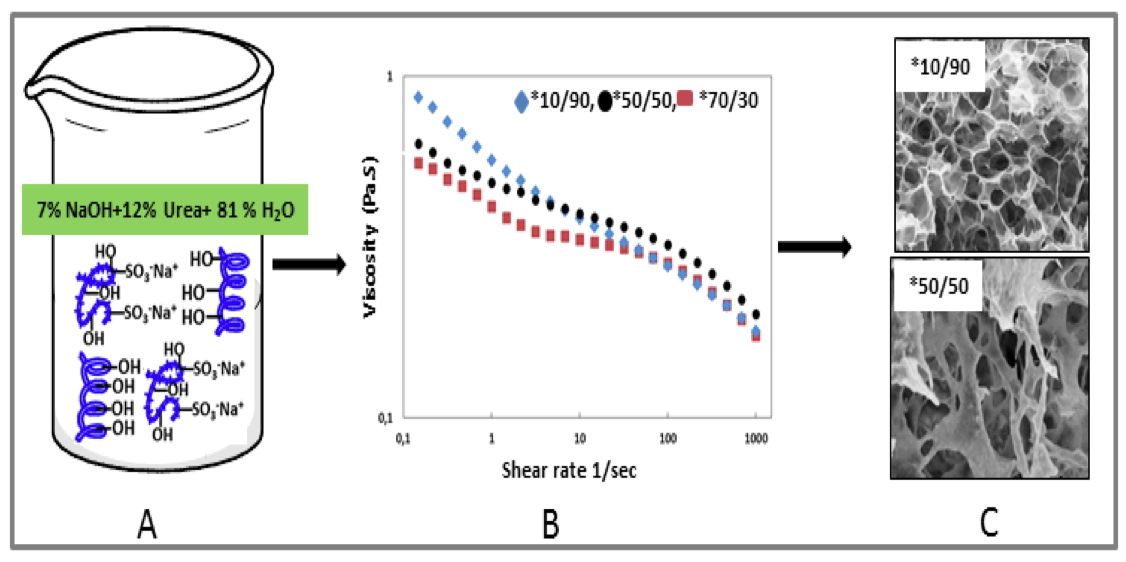In the present study, we report the supramolecular design of cellulose-sulfonate hydrogel beads by blending water soluble sodium cellulose ethyl sulfonate (CES) with the pretreated cellulose in sodium hydroxide-ureawater solvent system at –6 °C followed by coagulation in the 2M sulfuric acid system. The increasing of CES amount from 10% to 90% had a substantial effect on the viscosity and storage (G’) and loss (G”) moduli of the blended solutions. The CES concentration up to 50% in blends led to the formation of physically stable hydrogels after coagulation in acidic medium at pH-1 and showed the retention of nearly the same CES concentration at pH-6 after continuous water washings. The increased sulfonate content also enhanced the water holding capacity and internal porosity of the beads. Both ATR-FTIR and Raman spectrometry were used for the qualitative determination of sulfonate groups and SEM-EDX was used for the quantitative estimation in dried beads. In this research, we have established a correlation between the presence of anionic charge in the polysaccharide blend and stability of the prepared hydrogel beads. Hence our research provides a systematic methodology to design functional, highly porous cellulose hydrogels having the potential to be tested further in biomedical and healthcare applications.
Trivedi, Poonam; Schaller, Jens; Gustafsson, Jan; Fardim, Pedro Journal of Renewable Materials, 2017, vol. 5, no. 5, pp. 400-409(10) DOI: https://doi.org/10.7569/JRM.2017.634143

manicuredubai
Wow, fantastic blog structure! How lengthy have you ever been blogging for?
you make blogging glance easy. The whole glance of your website
is magnificent, let alone the content! You can see similar here najlepszy sklep